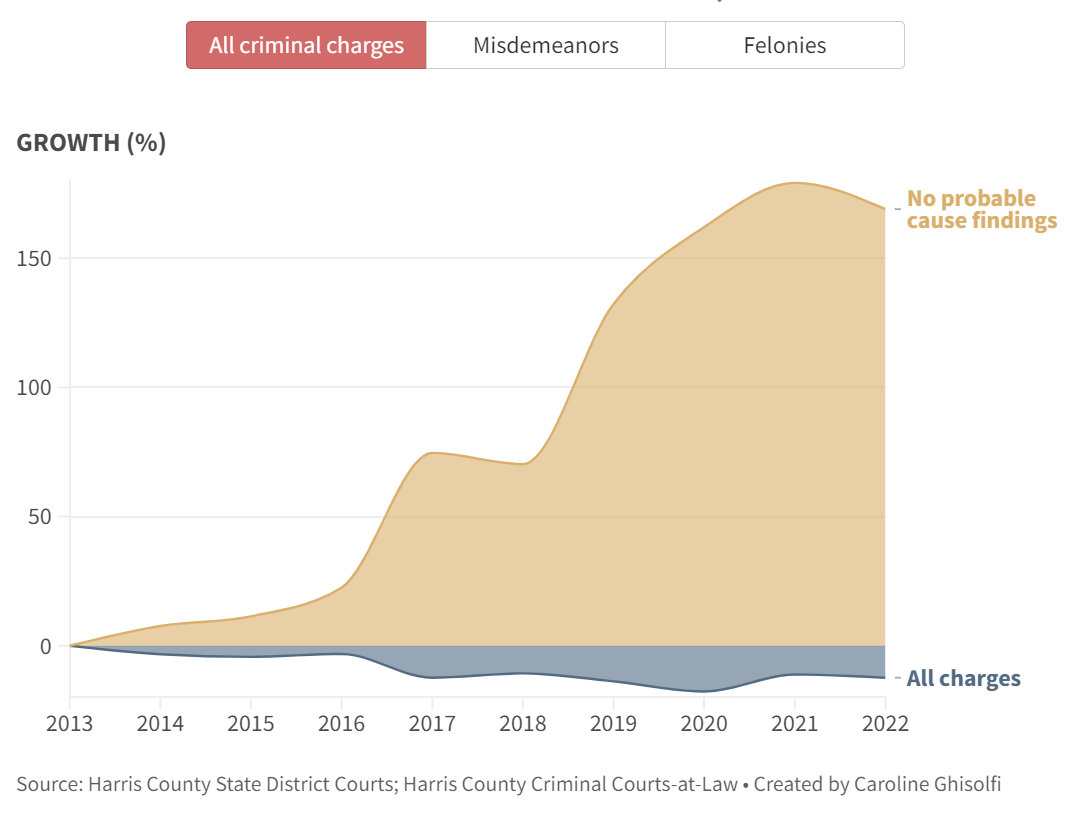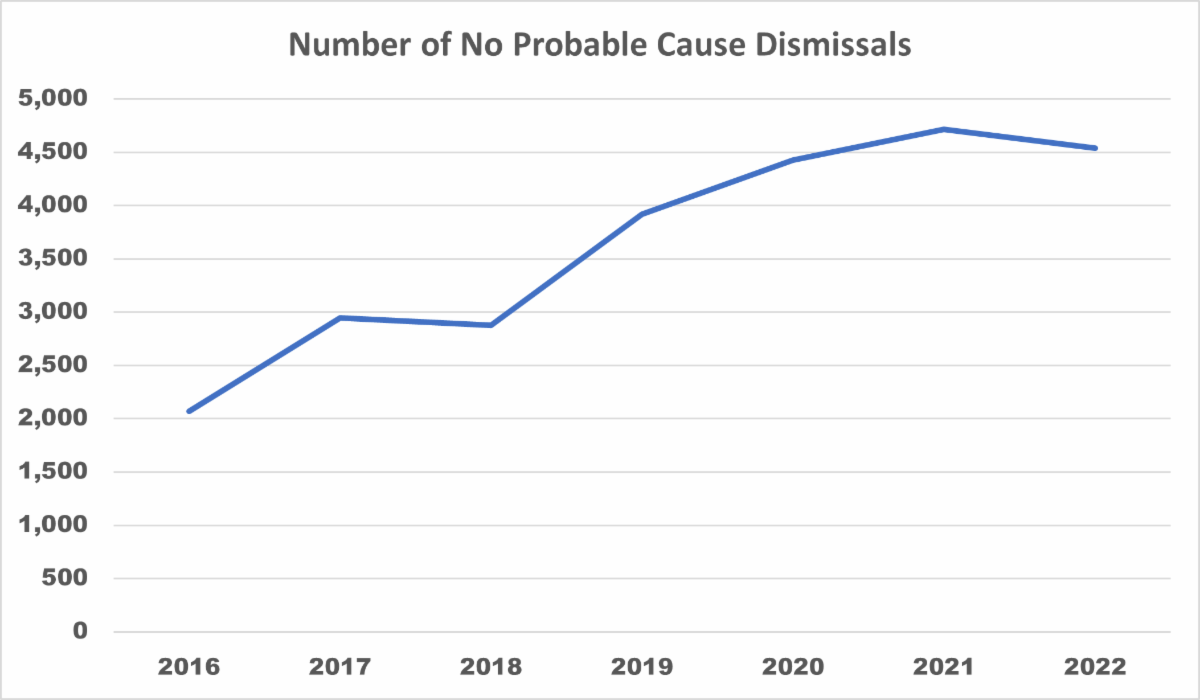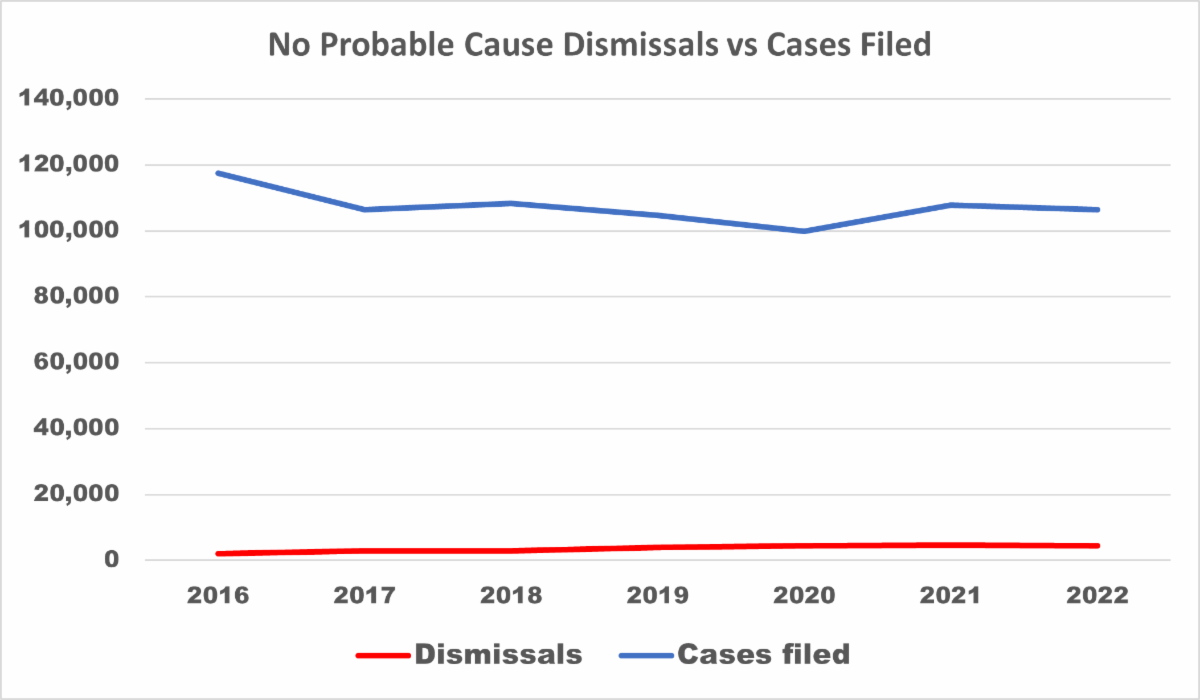In the run-up to next month’s primary, the Houston Chronicle has published over two dozen derogatory stories about Kim Ogg. These stories have regularly given Ogg’s adversaries and her opponent a platform to voice their criticisms with the imprimatur of being objective news stories. Their coverage of Ogg dovetails with the its campaign to convince Houstonians that their concern about violent crime is overblown, notwithstanding that in poll after poll Houstonians across every demographic have identified violent crime as their top concern.
This week the Houston Chronicle published its latest article in its campaign to unseat Ogg. It is one of the most biased, misleading stories I have ever seen in the paper. The headline was “Thousands of Houstonians are sent to jail with no legal basis under DA Ogg, judges say.” The story blatantly manipulates statistics, omits critical facts, and includes some outright false statements.
Let’s start with some background, which the Chronicle failed to provide.
There must be “probable cause” that a person has committed a crime before that person can be forced to stand trial. Probable cause is established by evidence that presents facts or circumstances that would lead a reasonable individual to conclude that the person has committed a crime. That standard is obviously subjective and one on which good faith observers can readily disagree.
The initial determination of probable cause is made by a law enforcement officer when making an arrest. In Harris County, after a person is arrested, they are taken to the Joint Processing Center (JPC), not our hellhole county jail as the story implies. The person is held there while potential charges are processed. They can be held pending charges for up to 24 hours for misdemeanors and 48 hours for felonies. Within that time the person must be either released or charged and taken before a magistrate.
During that time, the District Attorney’s Office (DAO) makes its own evaluation of whether there is probable cause to charge the person based on the evidence submitted by the officer. If the DAO concludes there is no probable cause, no charges are filed, and the person is released.
This highlights one of the critical omissions from the Chronicle story. The DAO intake office has refused to press charges requested by police 114,000 times since 2018, nearly 38,000 times just last year. In other words, since 2018 114,000 Houstonians were not subjected to the burden of defending themselves in a criminal case because the DAO declined to prosecute. So, the Chronicle’s headline could just as easily have been “Thousands of Houstonians avoid jail because DA Ogg refused to file charges.” But that headline would not be very good clickbait, nor would it have fit the Chronicle’s political agenda.
The crux of the Chronicle’s story is that the DAO is charging people when there is no probable cause. They base their conclusion on the number of times that a judge has dismissed a case for lack of probable cause. According to the Chronicle story, in 2016 (the year before Ogg took over the office), 2,067 cases were subsequently dismissed by the trial judge. By 2022, that number had grown to 4,560, about 120% increase.
From this, the Chronicle concludes that “[t]his means prosecutors are sending more and more Houstonians to an already-overcrowded jail with no legal basis.” This statement is flatly untrue.
First, the story conveniently omits that the DAO does not have the final say on whether probable cause exists. In addition to the police officer and the DAO concluding that probable cause, so must a magistrate. No one is sent to the Harris County jail unless a magistrate has also concluded that there was probable cause. Most of the dismissals cited by the Chronicle story occurred before the magistrate which means the person was never transferred to the Harris County jail.
The conclusion also ignores that 60-70% of the dismissed cases were misdemeanors. Defendants charged with a misdemeanor are almost universally released on bond. Almost of misdemeanor defendants are released directly from the JPC and are again never transferred to the Harris County jail.
If thousands of people had been sent to jail without probably cause as the story states, it would show up as an increase in jail population since Ogg became DA. But according the Harris County Jail dashboard the number of inmates in jail now is almost exactly the same as when Ogg took over has been mostly flat over her tenure.
The Chronicle investigation did not determine, or chose not to report, exactly how many of the defendants whose cases were dismissed were actually transferred to the Harris County jail and held for longer that the 24/48-hour limit, but it would clearly be a very, very small fraction of those cases that were dismissed, not the entire number as the story implies.
Further, just because a judge ruled there was no probable cause, that does not necessarily mean the person was innocent. Indeed, in about 25% of the felonies cases that were dismissed, a grand jury later returned an indictment after additional evidence had been collected.
My pet peeve about the story, however, is this graph. It was intentionally designed to sensationalize the data on the dismissed cases.

First, note that the scale of the graph is in percentile. This is a well-known technique to dramatize relatively minor changes over time. Had the Chronicle instead graphed the actual number of dismissals over time, it would have looked like this.

Quite a bit less dramatic.
Also, two other well-known techniques were used to sensationalize the chart's appearance. It included data from 2013-2015, which are irrelevant to Ogg’s administration, and it shaded the area under the line. Both have the effect of making the “hill” look larger.
If the Chronicle was really interested ascertaining how accurate the charging process has been, then it should have compared the dismissal to the total number of cases filed to determine the “error rate.” The Chronicle reporters had that data because it is included in their graph. But to determine the frequency of dismissed cases as a percentage of total filings requires readers to do their own math and get out a magnifying glass to read the tiny text.
You will notice at the bottom of the Chronicle’s chart, there is a thin area shaded gray with a legend to the right that says, “All Charges.” There is no scale on that part of the chart, which should always be a big red flag. You must click on each year to see that the small gray area actually corresponds to 100,000-120,000 cases being filed annually. So, the thin gray shaded area represents data in the 0-120,000 range while the expansive pink shaded area represents data in the 0-5,000 range.
If you run the math, you discover that the dismissals for a lack of probable cause averaged 3.7% of all of the cases filed during Ogg’s tenure. Or stated differently, the DAO intake division got it right 96.3% of the time. The year before Ogg became DA, the rate was 98.2%.
If you put the number of cases filed and the number of dismissals on the same chart at the same scale to compare the two, this is what it looks like.

I am probably piling on now, but I feel compelled to point out a few other truly egregious things about the story.
The Chronicle story blames the supposed poor performance on a lack of experienced prosecutors assigned to the intake division. The DAO provided me with a roster of the lawyers currently assigned to that unit. The median tenure was 14 years of experience. Only four lawyers have less than three years of experience. Quite a contrast to the picture painted by the story. According to the DAO, this roster was also provided to the Chronicle. If that is the case, someone at the Chronicle made a conscious decision not to include the data on the actual experience numbers in the story and instead relied on her opponent and his surrogates to characterize the experience of the attorneys in the division.
The story also fails to mention that the increase in dismissed cases coincides with the pandemic. During that time, most communication was virtual. Frankly, I am surprised the increase in the dismissal rate was not much higher during that timeframe. You will notice that number of dismissals began to decline in 2022 as the pandemic subsided.
It also coincided with the nearly complete turnover of the courts from Republican to Democratic judges. Regardless of whether you think that was a good thing or not, it would be incredibly intellectually dishonest to ignore that the new judges likely have a different approach on how to handle probably cause hearings.
The Chronicle’s reporters state that their story was based on more than a dozen interviews with criminal attorneys. However, only two are identified and one, Lauren Byrne, has been an outspoken critic of Ogg since she left the DAO in 2020 and is a campaign surrogate for her opponent. I called three of my friends who practice criminal law. All three said they had not experienced any issues with the intake process.
As many of you know, I wrote for the Chronicle for a little over a decade. I can tell you that when I was there, this story would have never made it out of editorial. There was a well observed separation between the news and the opinion sections of the paper. Reporters wrote news and opinion editors articulated the paper’s opinions.
The Chronicle, to its credit, held true to that division long after much of the media had became captives of their partisan camps. And there are some reporters at the Chronicle who still work very hard at separating their personal politics from their reporting. But unfortunately, they are increasingly the exception.
If the Chronicle wants to endorse Ogg’s opponent, the paper certainly has the right to do so. But it should be done on the editorial page, not through slanted, one-sided articles published under the guise of being objective news stories or investigations. Doing so is a disservice to Houstonians and debases the integrity of the paper.

